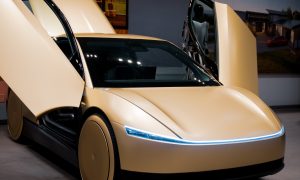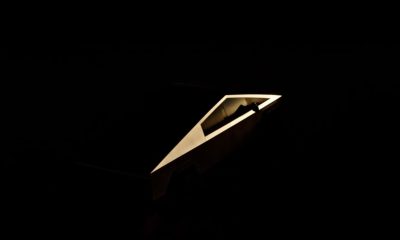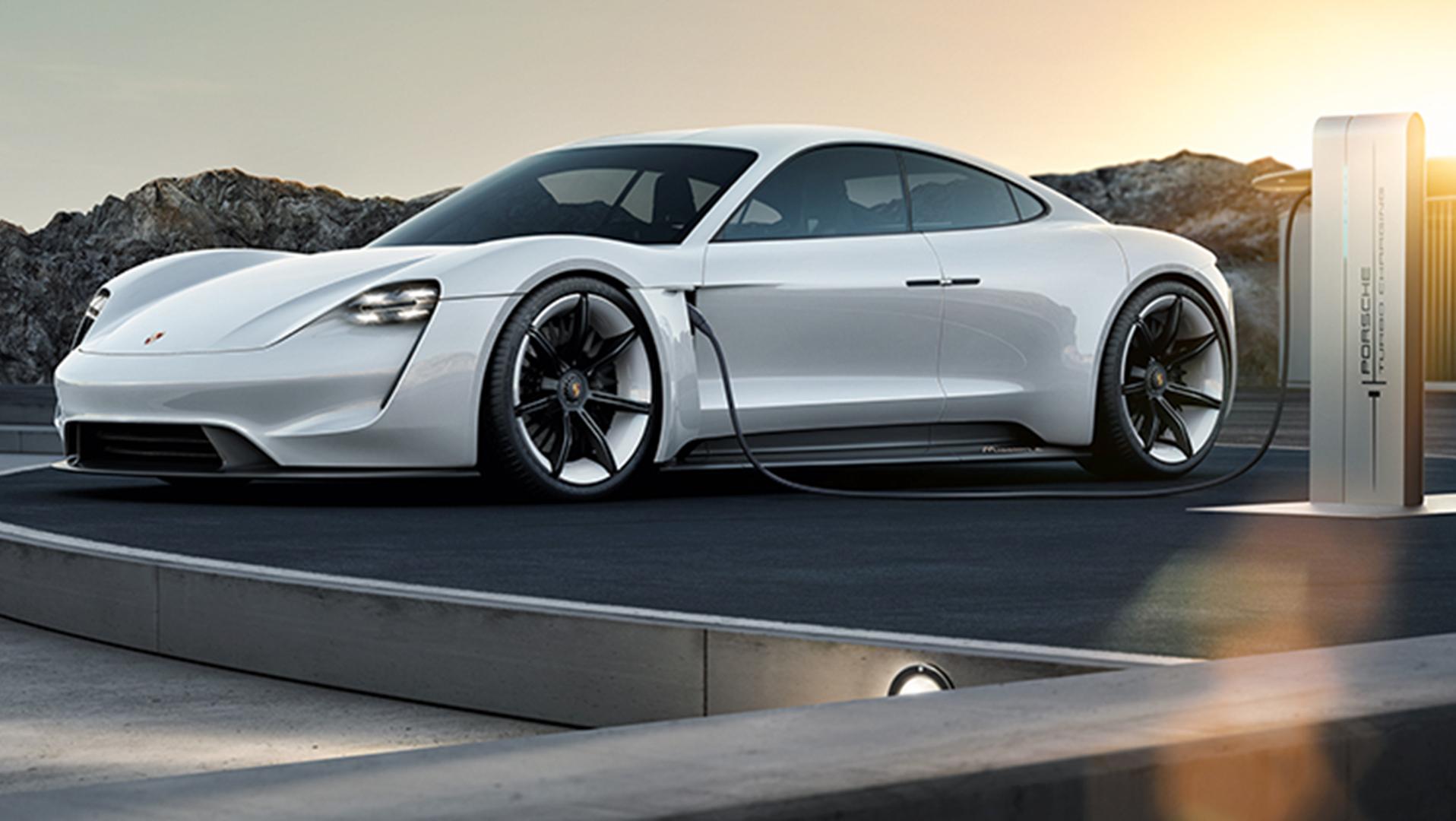

News
Tesla rival Porsche is starting to realize it’s not easy to produce the Taycan
Porsche recently opened reservations for the company’s first all-electric car, the Tesla Model S-rivaling Taycan (formerly known as the Mission E sedan). In an announcement earlier this month, Porsche Managing Director Alexander Pollich stated that the reception to the upcoming vehicle, whose final production version has not yet been unveiled, has so far been encouraging. Porsche expects to start producing the Taycan sometime in 2019, in order to meet what appears to be a healthy demand for the electric car.
As it turns out, ramping production of the Taycan is turning out to be a challenging task for the veteran automaker. Porsche plans to build its Taycan line at a facility located at Zuffenhausen, a suburb in Stuttgart, Germany. The site is a historic location for the pedigreed brand, considering that it is the location where the Porsche 911, one of the company’s most iconic vehicles, is being produced. Other important cars in Porsche’s lineup, such as the 718 Boxster, as well as the 718 Cayman, are also manufactured in the same facility.
Porsche is aiming to produce 20,000 Taycans per year in the Zuffenhausen site. Starting and ramping the production of the all-electric sedan requires a complex reorganization of Porsche’s facility, especially considering that the Taycan’s line has to be built while the production of the 911, 718 Boxster, and 718 Cayman is running at full capacity. In a statement to Dutch auto publication Vroom, Porsche head of production Albrecht Reimold described the difficulties facing the company.
“Finding the right location is a difficult decision. Transforming the existing factory costs a lot of money, moving to a new location as well. Transforming a factory while the production lines are running at full capacity is not an easy task,” he said.
Project manager David Thor Trygvason elaborated on the complex challenge involved in building the Taycan’s production line. According to Trygvason, the location where the Taycan’s line would be set up has to be overhauled. Apart from this, Porsche’s estimated timeline for the project is 48 months, making the project quite costly and demanding.
“The existing location has to be demolished and rebuilt in a short time, but at the same time the production of the 911 and 718 Boxster and Cayman must continue to run. That makes it not only difficult in terms of time and money, but also in terms of logistics and mobility. After all, we are in a location where there is already a factory, where other companies are nearby and where people live nearby,” he said.
Despite these difficulties, Reimold noted that Porsche employees have expressed a sincere commitment to begin the production of the Taycan as early as possible. According to the Porsche executive, the company’s workers have agreed to help finance the factory overhaul by opting to keep their pay flat until 2026, at which point the employees will start getting their investments back. This means that the employees will not have regular salary raises for the next few years.
“We have agreed with them to invest a part of their wage increase until 2025 in the construction of the new factory. From 2026, they will simply receive their investment back,” Reimold said.
Considering that Porche has dubbed the Taycan as one of the company’s most important vehicles after the iconic 911, sacrifices made to start the electric car’s production appear to be necessary, at least for now. If any, Porsche’s struggles to build the Taycan at scale mirror those that have been faced by Tesla with its Model 3 ramp. Just like Porsche’s factory, Tesla also set up its Model 3 lines in the same facility building the Model S and Model X. The aggressive ramp, which CEO Elon Musk aptly dubs as “production hell,” has been haunting the electric car maker for the past year. Ultimately, Porsche’s current difficulties with the Taycan are an indication that Tesla’s struggles with Model 3 production are not problems exclusive to the California-based electric car maker.
Building cars is not a simple task. Building cars that people want to buy is even more challenging. With car buyers and the auto market steadily shifting its interest to electric vehicles, carmakers with upcoming battery-powered cars are now feeling the pressure to roll out their offerings as quickly as they can. Being one of the legacy carmakers who has committed to releasing an electric car, this is something that Porsche appears to be experiencing now. Nevertheless, with a line of reservations that are growing longer, and with a workforce determined to make sacrifices for the company, there is a good chance that the Porsche Taycan can still make it in time for its anticipated debut next year. According to Trygvason, the work being done in Porsche’s factory might be daunting, but “the good news is that the work is still fully on schedule.”
The Porsche Taycan is expected to feature the legacy carmaker’s trademark performance, with the vehicle listed with a 0-60 mph time of 3.5 seconds, a range of 310 miles per charge, and a top speed of 155 mph.
Elon Musk
Tesla begins expanding Robotaxi access: here’s how you can ride
You can ride in a Tesla Robotaxi by heading to its website and filling out the interest form. The company is hand-picking some of those who have done this to gain access to the fleet.

Tesla has begun expanding Robotaxi access beyond the initial small group it offered rides to in late June, as it launched the driverless platform in Austin, Texas.
The small group of people enjoying the Robotaxi ride-hailing service is now growing, as several Austin-area residents are receiving invitations to test out the platform for themselves.
The first rides took place on June 22, and despite a very small number of very manageable and expected hiccups, Tesla Robotaxi was widely successful with its launch.
Tesla Robotaxi riders tout ‘smooth’ experience in first reviews of driverless service launch
However, Tesla is expanding the availability of the ride-hailing service to those living in Austin and its surrounding areas, hoping to gather more data and provide access to those who will utilize it on a daily basis.
Many of the people Tesla initially invited, including us, are not local to the Austin area.
There are a handful of people who are, but Tesla was evidently looking for more stable data collection, as many of those early invitees headed back to where they live.
The first handful of invitations in the second round of the Robotaxi platform’s Early Access Program are heading out to Austin locals:
I just got a @robotaxi invite! Super excited to go try the service out! pic.twitter.com/n9mN35KKFU
— Ethan McKanna (@ethanmckanna) July 1, 2025
Tesla likely saw an influx of data during the first week, as many traveled far and wide to say they were among the first to test the Robotaxi platform.
Now that the first week and a half of testing is over, Tesla is expanding invites to others. Many of those who have been chosen to gain access to the Robotaxi app and the ride-hailing service state that they simply filled out the interest form on the Robotaxi page of Tesla’s website.
That’s the easiest way you will also gain access, so be sure to fill out that form if you have any interest in riding in Robotaxi.
Tesla will continue to utilize data accumulated from these rides to enable more progress, and eventually, it will lead to even more people being able to hail rides from the driverless platform.
With more success, Tesla will start to phase out some of the Safety Monitors and Supervisors it is using to ensure things run smoothly. CEO Elon Musk said Tesla could start increasing the number of Robotaxis to monitors within the next couple of months.
Elon Musk
Tesla analyst issues stern warning to investors: forget Trump-Musk feud
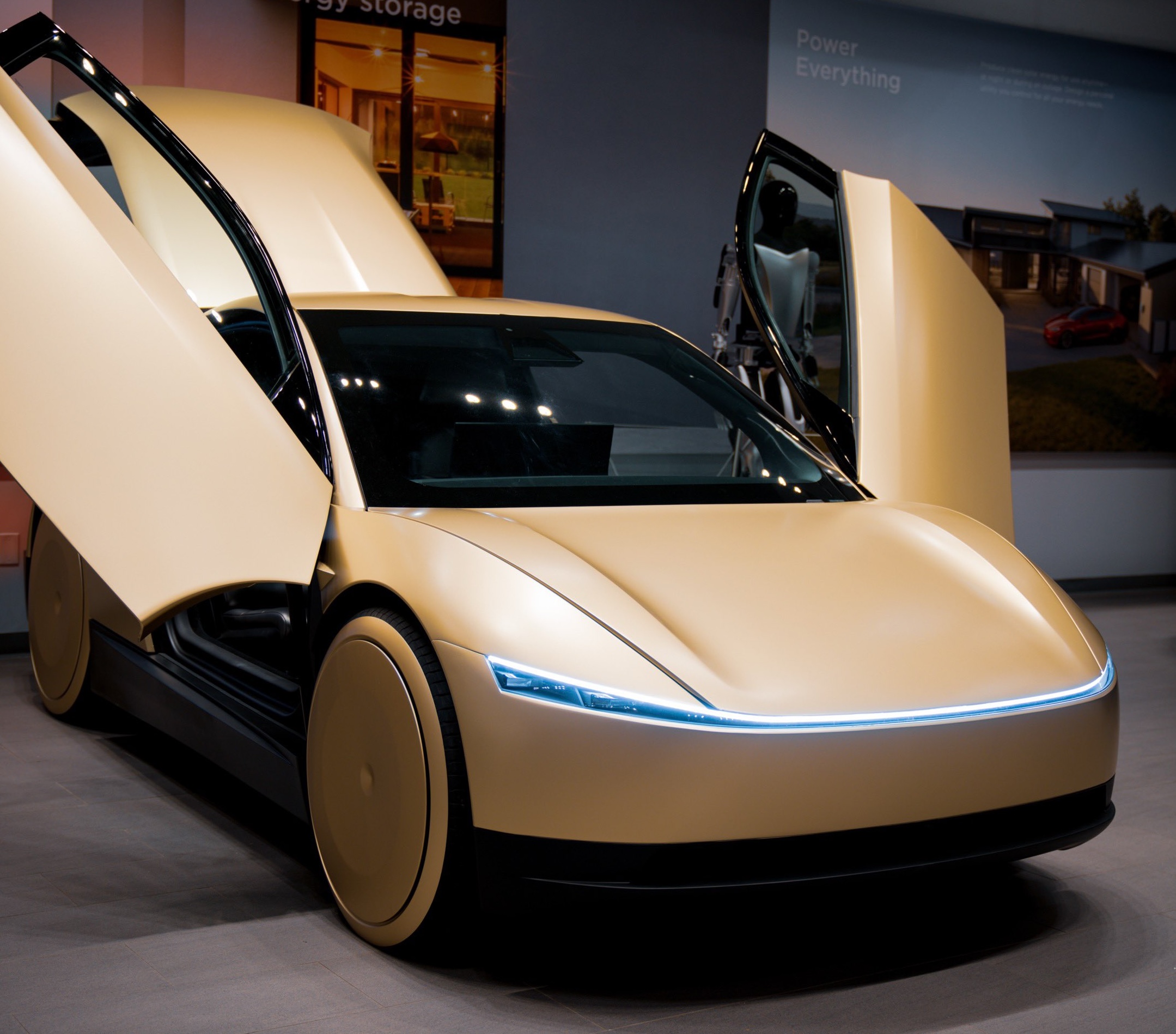
A Tesla analyst today said that investors should not lose sight of what is truly important in the grand scheme of being a shareholder, and that any near-term drama between CEO Elon Musk and U.S. President Donald Trump should not outshine the progress made by the company.
Gene Munster of Deepwater Management said that Tesla’s progress in autonomy is a much larger influence and a significantly bigger part of the company’s story than any disagreement between political policies.
Munster appeared on CNBC‘s “Closing Bell” yesterday to reiterate this point:
“One thing that is critical for Tesla investors to remember is that what’s going on with the business, with autonomy, the progress that they’re making, albeit early, is much bigger than any feud that is going to happen week-to-week between the President and Elon. So, I understand the reaction, but ultimately, I think that cooler heads will prevail. If they don’t, autonomy is still coming, one way or the other.”
BREAKING: GENE MUNSTER SAYS — $TSLA AUTONOMY IS “MUCH BIGGER” THAN ANY FEUD 👀
He says robotaxis are coming regardless ! pic.twitter.com/ytpPcwUTFy
— TheSonOfWalkley (@TheSonOfWalkley) July 2, 2025
This is a point that other analysts like Dan Ives of Wedbush and Cathie Wood of ARK Invest also made yesterday.
On two occasions over the past month, Musk and President Trump have gotten involved in a very public disagreement over the “Big Beautiful Bill,” which officially passed through the Senate yesterday and is making its way to the House of Representatives.
Musk is upset with the spending in the bill, while President Trump continues to reiterate that the Tesla CEO is only frustrated with the removal of an “EV mandate,” which does not exist federally, nor is it something Musk has expressed any frustration with.
In fact, Musk has pushed back against keeping federal subsidies for EVs, as long as gas and oil subsidies are also removed.
Nevertheless, Ives and Wood both said yesterday that they believe the political hardship between Musk and President Trump will pass because both realize the world is a better place with them on the same team.
Munster’s perspective is that, even though Musk’s feud with President Trump could apply near-term pressure to the stock, the company’s progress in autonomy is an indication that, in the long term, Tesla is set up to succeed.
Tesla launched its Robotaxi platform in Austin on June 22 and is expanding access to more members of the public. Austin residents are now reporting that they have been invited to join the program.
Elon Musk
Tesla surges following better-than-expected delivery report
Tesla saw some positive momentum during trading hours as it reported its deliveries for Q2.

Tesla (NASDAQ: TSLA) surged over four percent on Wednesday morning after the company reported better-than-expected deliveries. It was nearly right on consensus estimations, as Wall Street predicted the company would deliver 385,000 cars in Q2.
Tesla reported that it delivered 384,122 vehicles in Q2. Many, including those inside the Tesla community, were anticipating deliveries in the 340,000 to 360,000 range, while Wall Street seemed to get it just right.
Tesla delivers 384,000 vehicles in Q2 2025, deploys 9.6 GWh in energy storage
Despite Tesla meeting consensus estimations, there were real concerns about what the company would report for Q2.
There were reportedly brief pauses in production at Gigafactory Texas during the quarter and the ramp of the new Model Y configuration across the globe were expected to provide headwinds for the EV maker during the quarter.
At noon on the East Coast, Tesla shares were up about 4.5 percent.
It is expected that Tesla will likely equal the number of deliveries it completed in both of the past two years.
It has hovered at the 1.8 million mark since 2023, and it seems it is right on pace to match that once again. Early last year, Tesla said that annual growth would be “notably lower” than expected due to its development of a new vehicle platform, which will enable more affordable models to be offered to the public.
These cars are expected to be unveiled at some point this year, as Tesla said they were “on track” to be produced in the first half of the year. Tesla has yet to unveil these vehicle designs to the public.
Dan Ives of Wedbush said in a note to investors this morning that the company’s rebound in China in June reflects good things to come, especially given the Model Y and its ramp across the world.
He also said that Musk’s commitment to the company and return from politics played a major role in the company’s performance in Q2:
“If Musk continues to lead and remain in the driver’s seat, we believe Tesla is on a path to an accelerated growth path over the coming years with deliveries expected to ramp in the back-half of 2025 following the Model Y refresh cycle.”
Ives maintained his $500 price target and the ‘Outperform’ rating he held on the stock:
“Tesla’s future is in many ways the brightest it’s ever been in our view given autonomous, FSD, robotics, and many other technology innovations now on the horizon with 90% of the valuation being driven by autonomous and robotics over the coming years but Musk needs to focus on driving Tesla and not putting his political views first. We maintain our OUTPERFORM and $500 PT.”
Moving forward, investors will look to see some gradual growth over the next few quarters. At worst, Tesla should look to match 2023 and 2024 full-year delivery figures, which could be beaten if the automaker can offer those affordable models by the end of the year.
-

 Elon Musk3 days ago
Elon Musk3 days agoTesla investors will be shocked by Jim Cramer’s latest assessment
-

 News1 week ago
News1 week agoTesla Robotaxi’s biggest challenge seems to be this one thing
-

 Elon Musk2 weeks ago
Elon Musk2 weeks agoElon Musk slams Bloomberg’s shocking xAI cash burn claims
-

 News2 weeks ago
News2 weeks agoTexas lawmakers urge Tesla to delay Austin robotaxi launch to September
-

 Elon Musk2 weeks ago
Elon Musk2 weeks agoFirst Look at Tesla’s Robotaxi App: features, design, and more
-
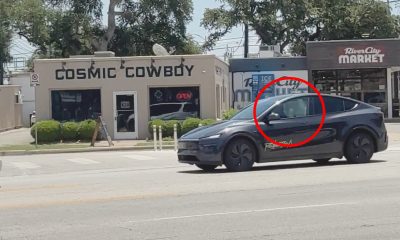
 Elon Musk2 weeks ago
Elon Musk2 weeks agoTesla Robotaxis are becoming a common sight on Austin’s public roads
-

 Elon Musk2 weeks ago
Elon Musk2 weeks agoSpaceX President meets India Minister after Starlink approval
-

 Elon Musk2 weeks ago
Elon Musk2 weeks agoxAI’s Grok 3 partners with Oracle Cloud for corporate AI innovation


